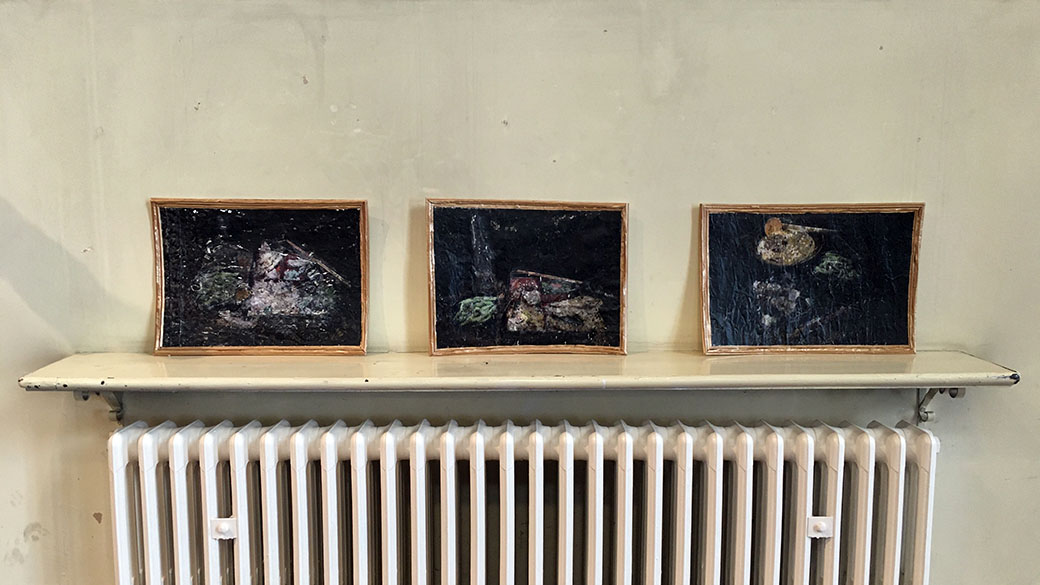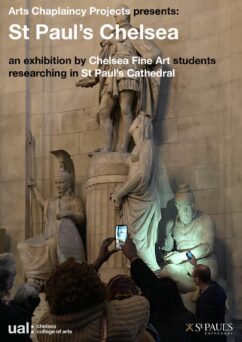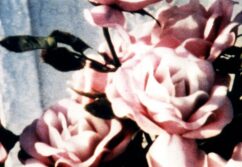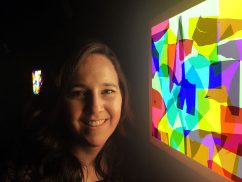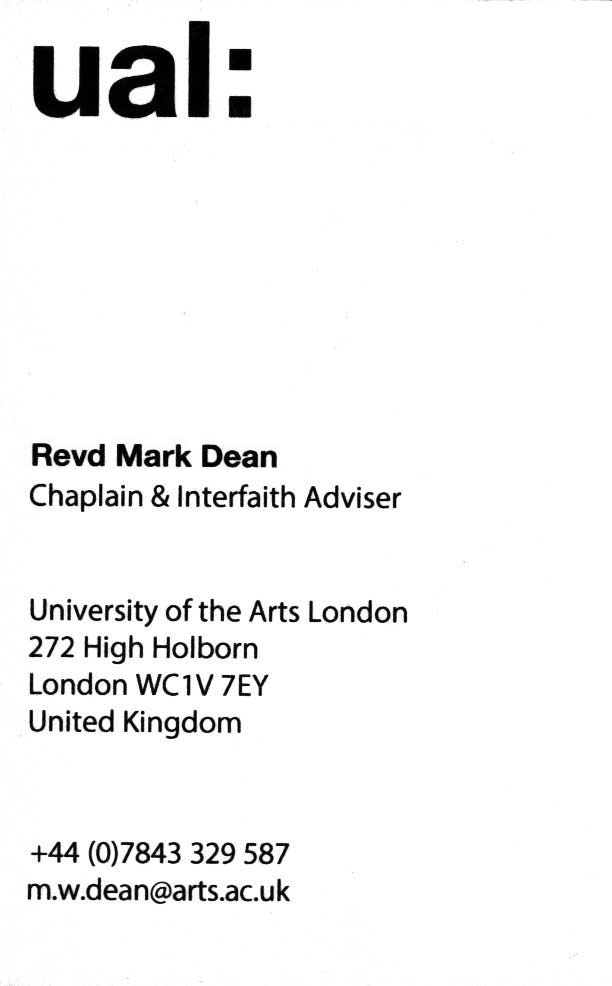Chelsea Mardi Gras

Poster design: Lorraine Snape
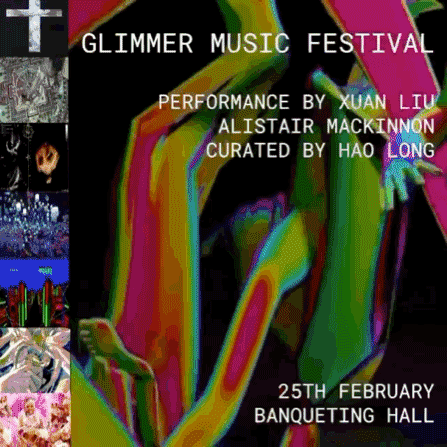

A Lenten exhibition of work by MA Fine Art students from Chelsea College of Arts
Lizzie Cardozo-Richards, Michele Clarke, Yi Dong, Alexandra Errington, Iris Garagnoux, Tanya Glavatskix, Frank Jimin Hopp, Zhaoyi Li, David Mook, Beverley Onyangunga, Alan Powdrill, Lorraine Snape, Hon Fung Wu
St Saviour’s Church
St George’s Square
Pimlico
London SW1V 3QW
26 February – 22 March 2020
Opening event
Sunday 1 March
10.30-1 pm
Artist-led tour and refreshments following Sung Mass
All welcome
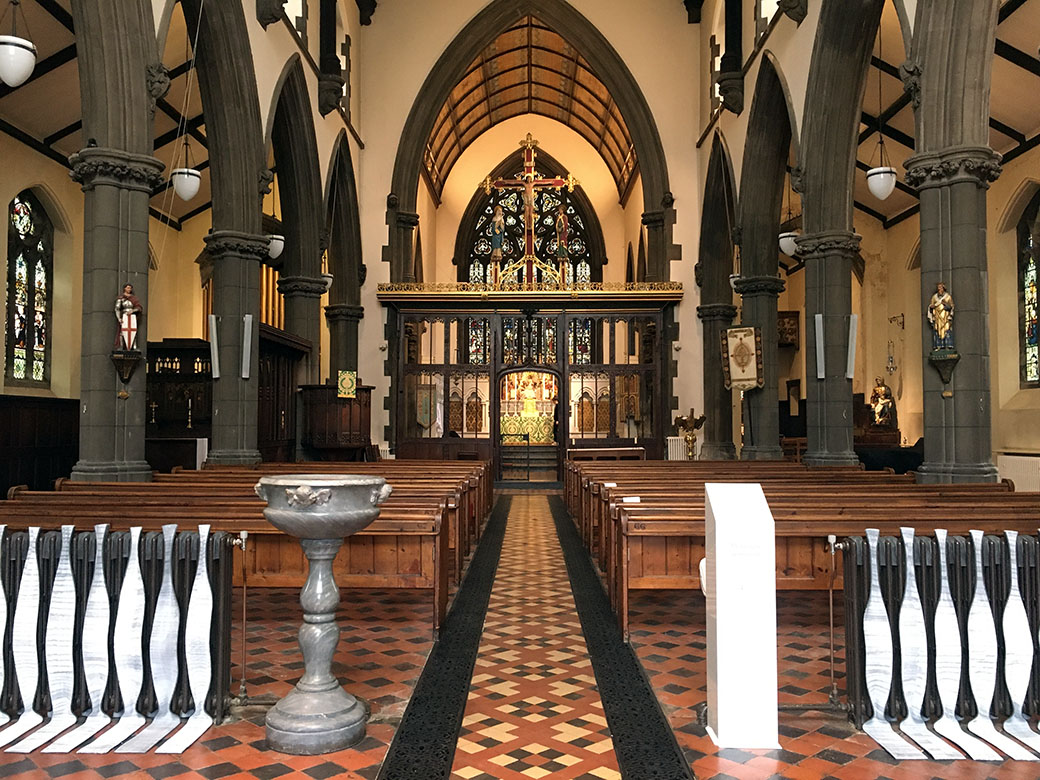
This exhibition grew out of the Mardi Gras festival at Chelsea College of Arts, following a desire to explore questions of Lent beyond pancakes (although we did make pancakes as well as art on Shrove Tuesday!) At the kind invitation of Fr. Matthew Catterick, students led by MAFA course director Patti Ellis were given an introduction to the season of Lent in general, and the particular context and history of St Saviour’s Pimlico, which is the nearest parish church to the college.
For many of the students (not just those from overseas) Lent is not necessarily a part of their culture, but they approached the subject with great sensitivity and interest, producing a quietly ambitious exhibition, one that invites exploration, and rewards contemplation.
Too often, art exhibitions in churches are either a clash of cultures, with neither side seeming able to understand the other, or a bland compromise, where cultural tensions are avoided in the hope of some kind of harmony through aesthetics. This show is neither of those, and it might be worth considering how this came to be.
Firstly, there was a willingness on the part of both the church and the artists to listen and get to know one another in their respective difference – in other words, the project was approached relationally, and not self-servingly. Service is fundamental to Christianity, and social practice is central to the curriculum of contemporary art education, but in both cases, it must be actively worked for, in a context of sometimes powerful resistance. In this sense at least, the principles and practices of Lenten spiritual discipline can be seen to have a shared relevance.
But while is in this way the religious context is central to this project, there is another sense in which the artists approached the exhibition as they would any other; that is, they took account of the specific social, cultural and material context of the space, and sought ways in which they might marry their own concerns with those particularities. In this way, they were able to enter into a relationship with the church that was specific, not generic, and the work they have produced out of this relation is current, and not cliched.
We hope you enjoy the exhibition, and that you will be inspired to return to this and indeed other churches, and to visit other art exhibitions, including the many exhibitions held at Chelsea College of Arts.
Ashes to Passion is an Arts Chaplaincy Project, in partnership with St Saviour’s Church, Pimlico (Diocese of London) and Chelsea College of Arts (University of the Arts London). Poster design: Lorraine Snape
Lizzie Cardozo-Richards

3 ties
steel framework, marble, cable ties, canvas cloth.
This sculpture pays tribute to themes of beginnings and passings. Using marble to represent a heavy weight (the body), the cable ties act as a type of hammock cradling this weight. These cable ties are within an eroded metal circular framework. The rusty framework works to present the ideas of time. Its circular form represents the notions of totality, wholeness, the infinite, timelessness and all cyclic movements. The marble is wrapped in a shroud-like cloth in direct response to Lent, along with the number of cable ties used.
The suspended stone creates a sense of tension and gravity, evoking the feeling of movement. Marble is used as a symbol of purity and immortality. Stone being a natural material works to root the piece. The elasticity of the ties shows the instability of life and how we hang in the balance of this.
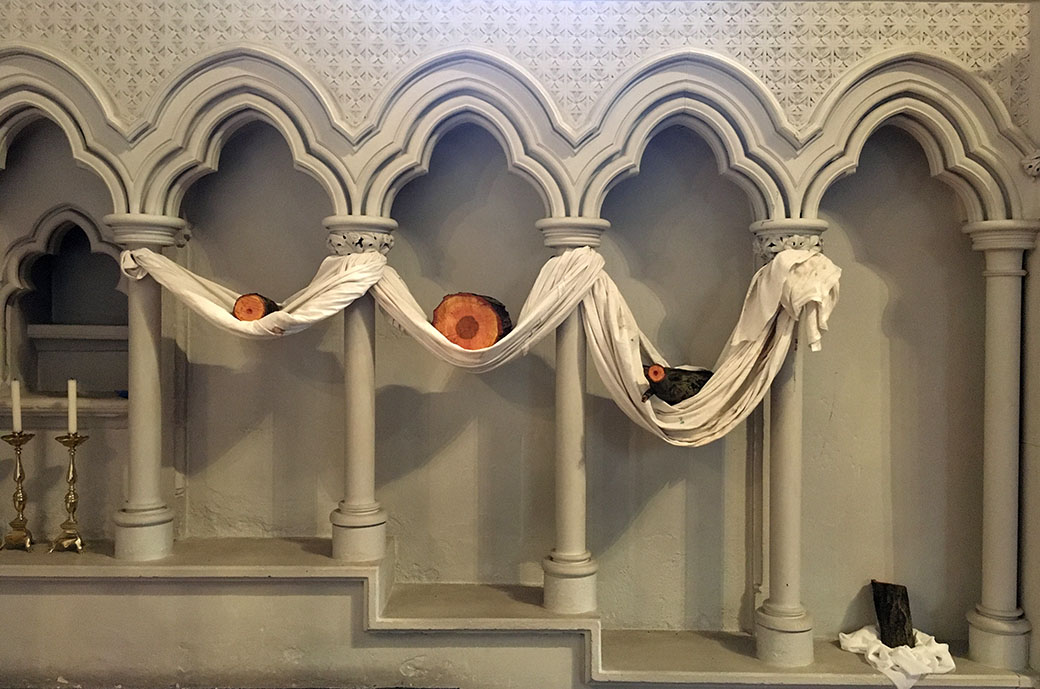

Archway
dust sheets, logs, rocks, cable ties.
This is a site specific piece, working with the architecture of the church. The form of the arches are evoked through the hanging of the cloth. The hanging in triplets comments on the rule of three, the cycles of life and religion. The cloth’s marks show traces of actions and life, whilst also possessing the idea of time. The use of a single sheet in either side of the space creates connectivity and fluidity. The cloth holds a shroud like quality.
The use of rocks create a sense of gravity and symbolizes ideas of endurance, stability, and permanence. The pieces of wood are hung to create suspension, whilst embodying physical and spiritual nourishment, union and fertility. This site specific work comments on the fragility of existence and the passing of the material body.
Michele Clarke
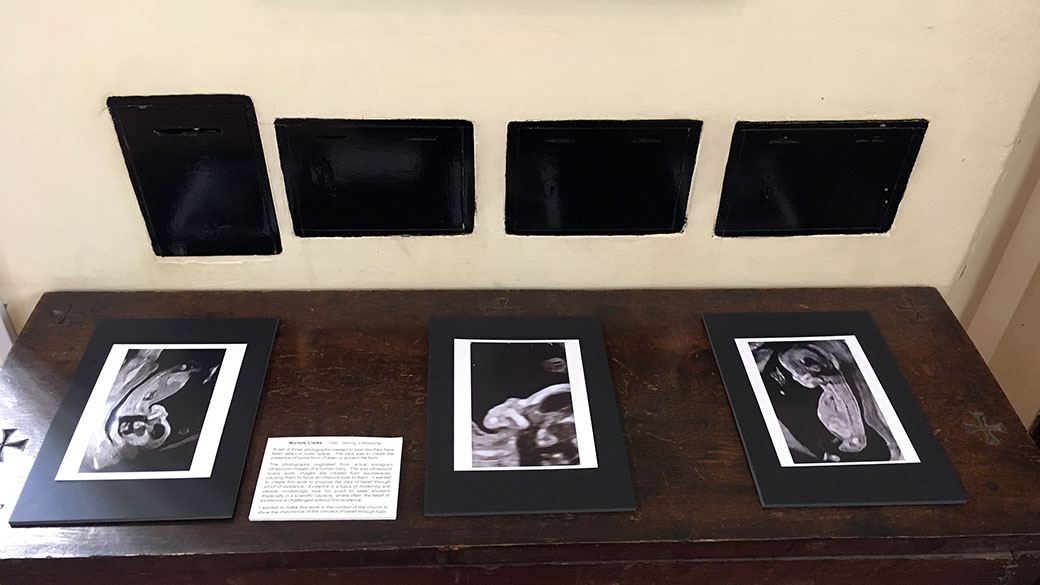
Seeing is Believing
A set of three photographs created to look like they have been taken in outer space. The idea was to create the presence of some form of alien life form.
The photographs originated from actual sonogram ultrasound images of a human baby. Ultrasound scans work by creating images from soundwaves causing them to have an obscure look to them. I wanted to create this work to propose the idea of belief through proof of existence. Evidence is a basis of modernity and people increasingly look for proof to seek answers, especially in a scientific capacity, where often, the belief of existence is challenged without firm evidence.
I wanted to make this work in the context of the church to show the importance of the concept of belief through faith.
Yi Dong
Prayers
Plaster, firework fairy lights and candles
This project is about praying for the deceased and patients who suffer coronavirus. These hands with candles will put on the holy-water basin. Both of them are associated with healing and praying. I want to express praying from God to help us could overcome this terrible moment. People could pay 1 pound in a money box for buying one new candle to replace the one burned out. All collections will belong to St Saviour’s Church to help people.
Hands could be an emotional element to express people’s feelings. I wish these hands could be laid upon a great host of people who found his healing touch brought instant relief to their sick and suffering bodies. There are three hands, Which primarily stands for the Trinity: God the Father, God the Son, and God the holy spirit. The color is turquoise, which mixes with green and blue. Green is associated with immortality, resurrection, and spring. Blue is about the healing power of God. The firework fairy light hangs over the holy-water basin. It symbolizes the light of hope from God.
Alexandra Errington
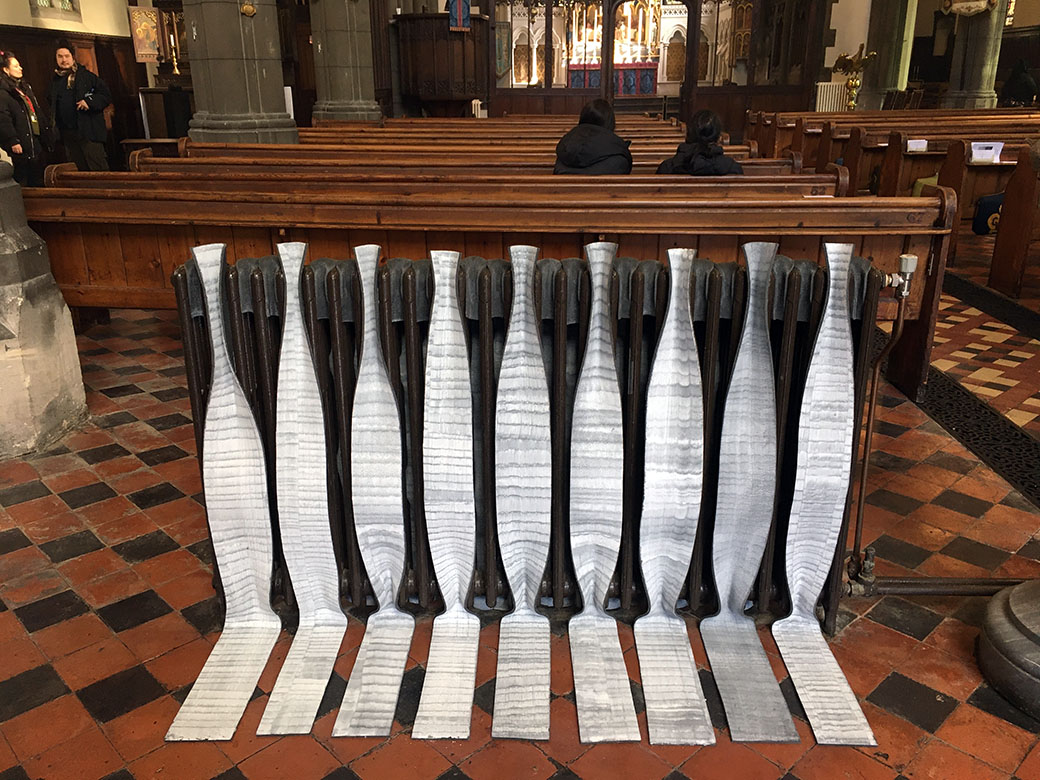
Warped
Radiators, yoga mats, acrylic paint
St Saviours church is enveloped by intricate and elegant motifs that transport us away from reality. In a space designed to elevate the mundane, radiators are perhaps an uncomfortable reminder of our trivial lives and mortal needs. Urging an encounter these skeletal structures are charged with formal potential. Objects are like energy fields, they have laws, desires and neglected properties.
Choosing to infiltrate two of these rigid armatures with flexible foam mats, I have formed a curved and repetitive language that hopes to interact with the surrounding architecture. Tension filled, each component embraces it’s allocated space like a clinging cerement, enabling me to highlight and animate these objects.
Iris Garagnoux
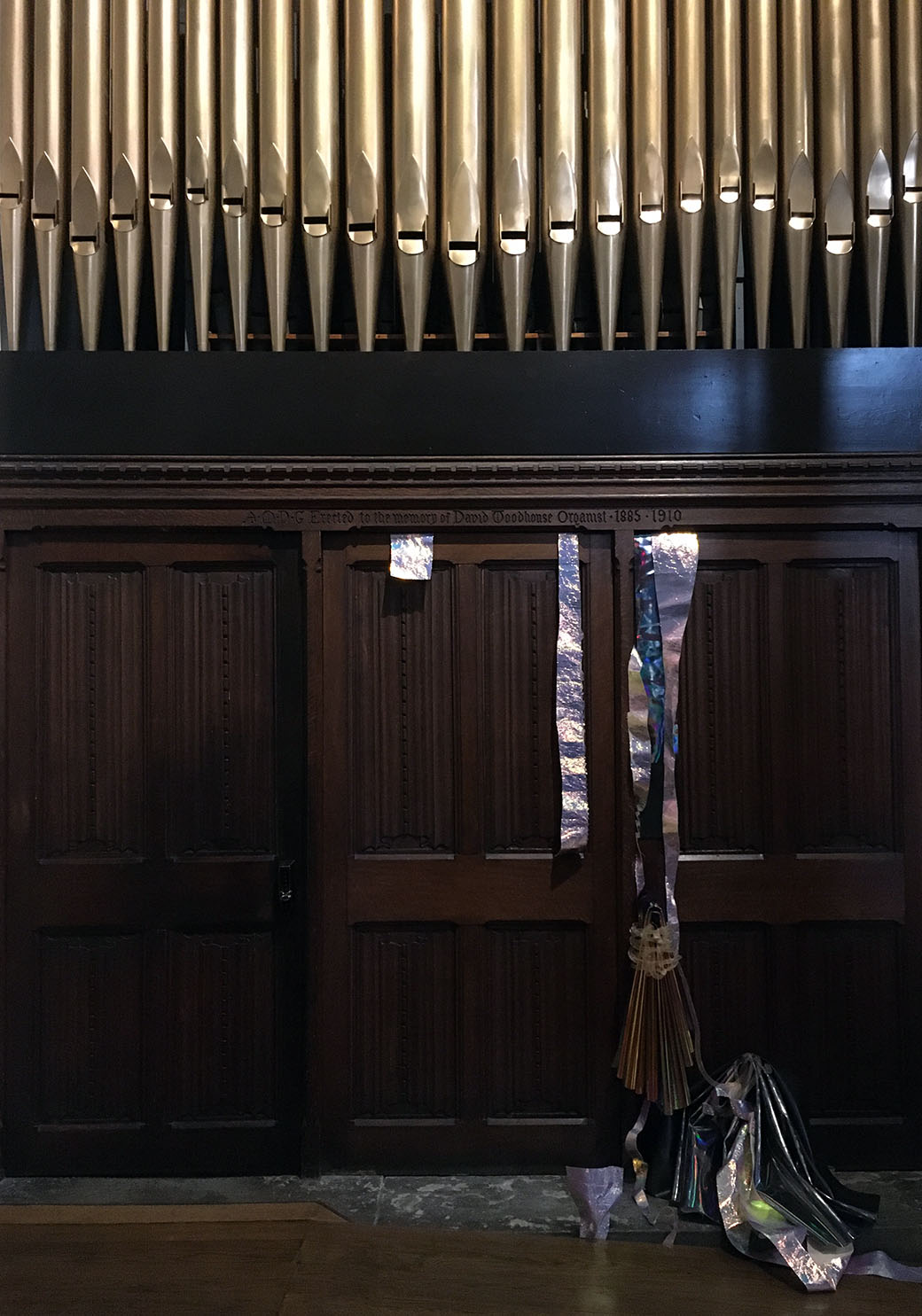
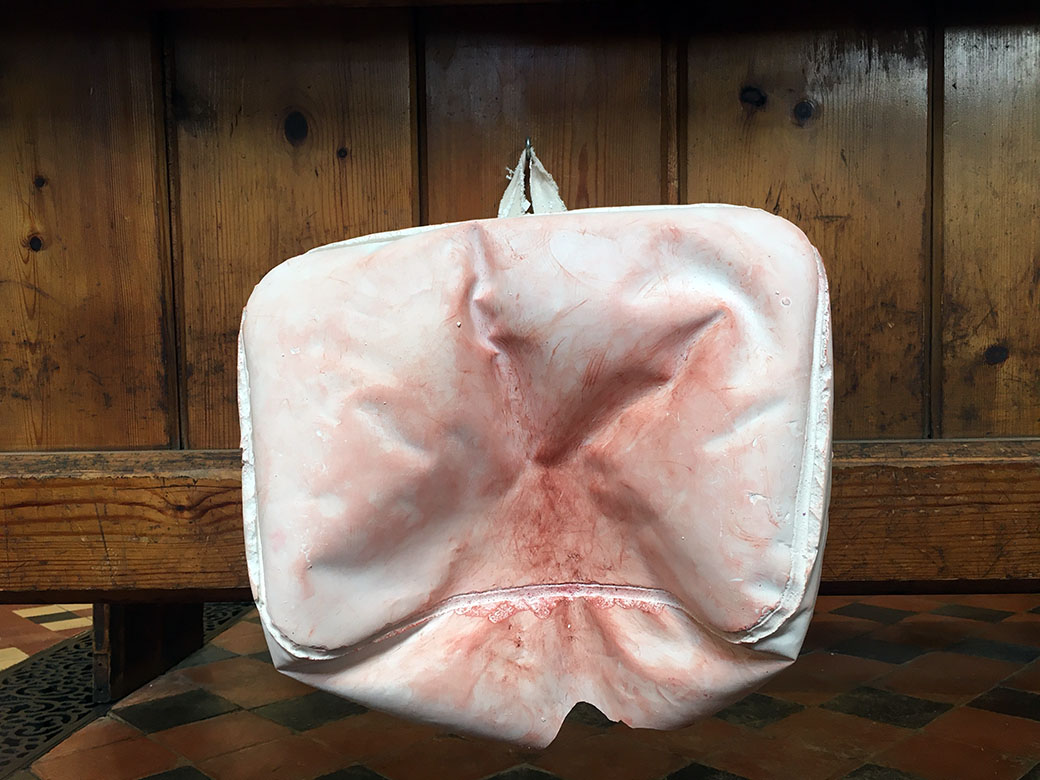
Tanya Glavatskix

Frank Jimin Hopp
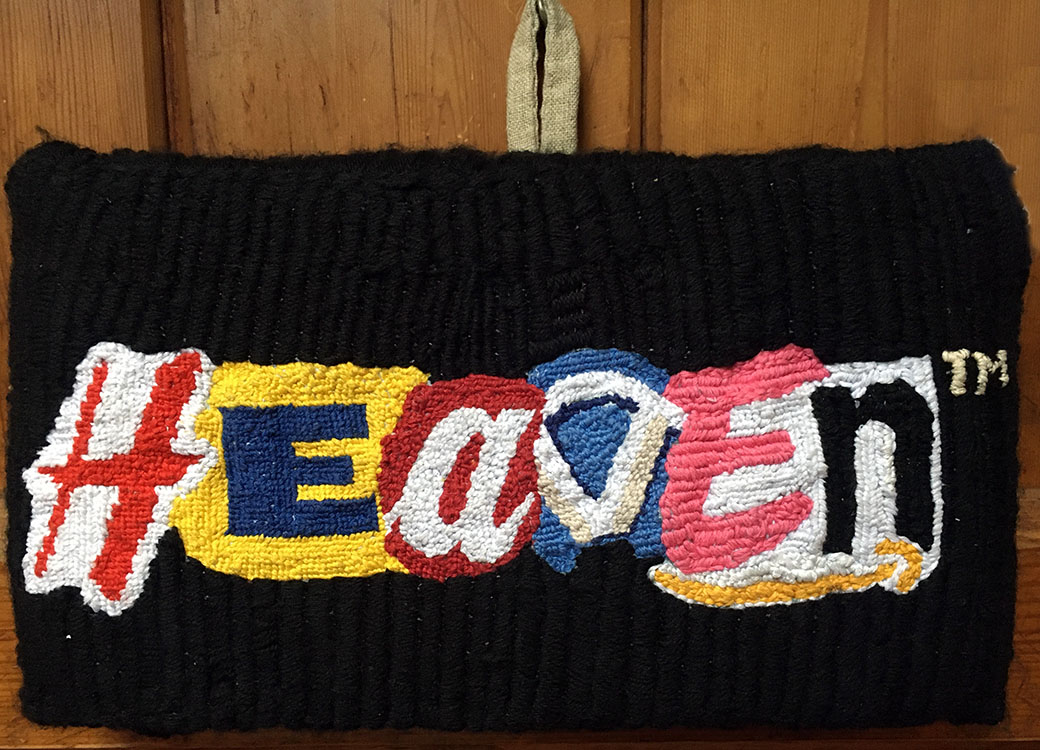
Zhaoyi Li

David Mook
My mother loved a lot of things. Her top 3 were family, God and music. She also wanted to instil those beliefs into her children. I remember every Sunday morning waking up, putting on my Sunday best, shoes polished, and off we trotted hand in hand down the road to church. My mother’s love for music also meant that each morning she would wake me before primary school to practice the piano. She dreamed of me playing the piano at church as the priesthood pianist. That is someone who plays the piano for the men at church while they sing. I can play the piano now, although I was never really that good at it, and I would probably still go to church, except there’s one problem. I’m gay! In the church I grew up in, that’s not accepted. Therefore leaving me rejected. How could God love everyone but not me? This brings me to my proposal. Fr Matthew said that for Lent you can either give something up, or take something up. My proposal is to take something up. I propose that every Monday to Friday during the 40 days of Lent I will learn and practice one song on the organ until I can perform it perfectly. Why would I do this? And what kind of art practice is this? I think it’s a healing and restorative practice. Understanding that not all religious institutions reject gays. I think my Mum’s love for music was instilled in me, yet I have never been able to access that in London, since I don’t have a piano, having only lived in simple, small, humble places. I think this would be good for the church as it’s nice to walk into a church and hear music. The downside is the first week or so could be a little messy, as learning something new is always a bit of a struggle. Once I have learned the song you may get bored of hearing it every day, but this I find interesting, after Fr Mathew talked about the rituals of the church. In some ways to practice something every day is similar to the rituals of religion.
Beverley Onyangunga

Sistah in Christ
Twine, bamboo and cowrie shells
The crozier is a combination of the Venus sign and the cross, to highlight women who are followers of Christ. Cowrie shells are worn as jewellery by African women, they symbolize womanhood and fertility. Inspiration for the piece: Dona Beatriz Kimpa Vita, Dame Sarah Mullally (Bishop of London), Mary Magdalene and Joan of Arc.
Alan Powdrill

Lorraine Snape
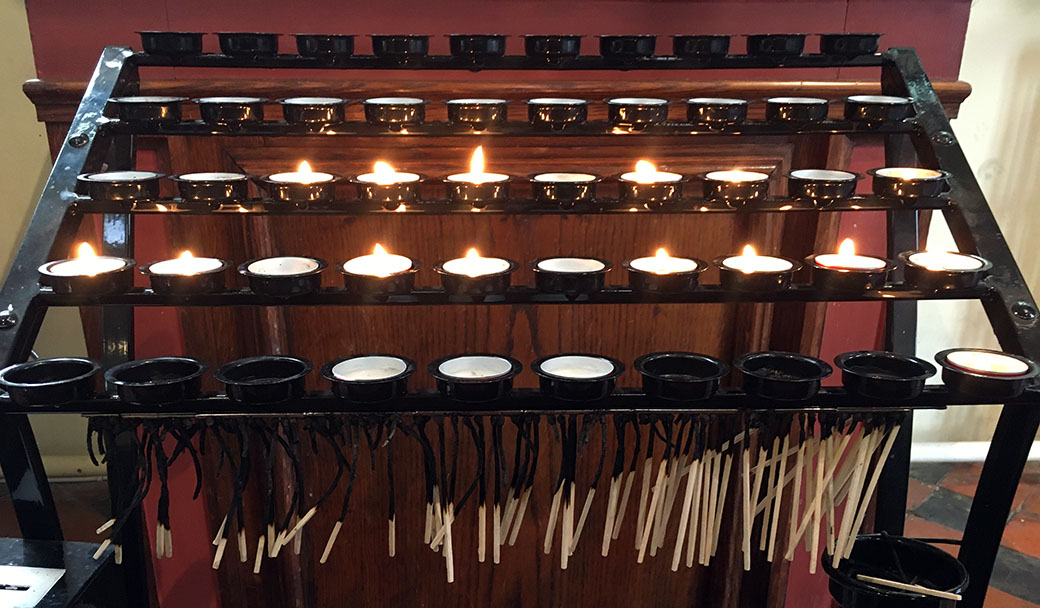
charred (remains)
neodymium magnets, cooks matches
Installed on the bottom row of the prayer candle rack is a line of rare earth neodymium magnets. Hanging from this horizontal bar are burnt matches, subtly suspended. The ritual of striking a match and lighting a candle in prayer, often to think of a loved one, is commonplace in church. This artwork is intended to draw attention to this and act as a focus for further pause and consideration.

step (this way)
cast bronze
The floor of St Saviours Church is imbued with the memory of those who have worshipped there. Looking at residues and pathways, journeys and the passing of time, and reflecting on how St Saviours has been carved by its history, a loose parquet flooring block was replaced with a cast bronze replica. This piece subtly changes the acoustics of the already wobbly flooring, drawing attention to the ground beneath and reinforcing our connection to the earth. Hiding in plain sight, this sensitive installation only occasionally makes its presence known to those who pass over it or care to take a closer look.
Hon Fung Wu
